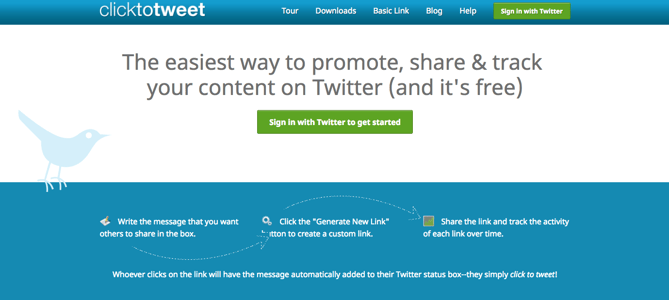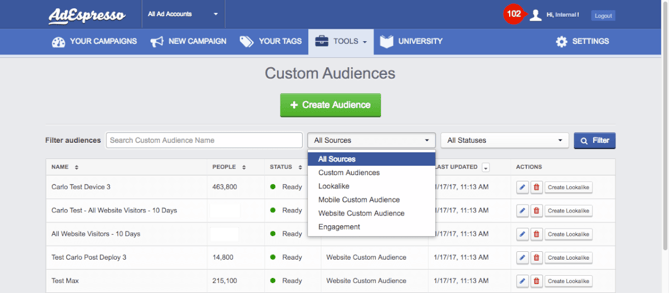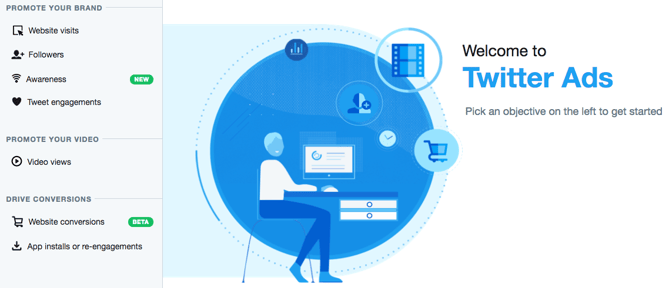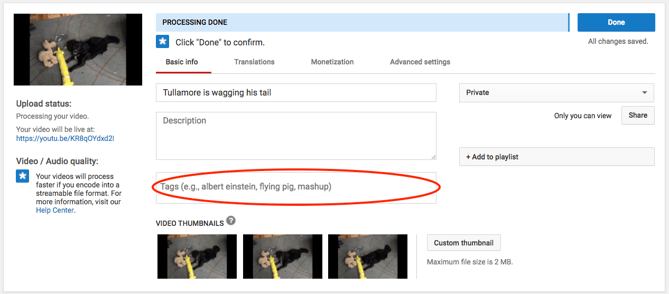
When I find a good growth marketing resource, I remember it and hold onto it for dear life. Whether it’s a how-to video on a specific growth topic or an expert’s blog, I treasure every piece of quality advice I can find.
But one thing that’s been a bit trickier to track down is a single, comprehensive list of the best growth hacks to put into practice, or at least experiment with. What’s something I can try today, for example, with content that I already have?
When I surveyed my colleagues, I learned that I’m not the only one asking that question. That’s why we compiled this list of 24 growth hacks that you can put into practice with your current content assets. 
Whether it’s repurposing it to create something new, or adding something small but effective to it, these hacks require no massive undertaking.
24 Growth Hacks to Try Today
1) Repurpose blog content.
Blog posts can stand to benefit from more than just edits. They have the potential to be transformational.
You may have heard that multimedia content is quite popular these days -- in fact, marketers who use video grow revenue 49% faster than non-video users. But how do you come up with ideas for what these videos should be about? That’s where your blogs come in. You can adapt them as short recap videos, or even podcasts to provide your audience with a new way to learn from you. Plus, it helps you build a presence on multiple channels. While blogs, when composed correctly, tend to perform better in organic search results, videos tend to show more promise on social media.
2) Build social sharing links directly into content.

Speaking of social media -- are you making it easy for your audience to tell their friends about you? If not, consider building easy sharing tools like “tweet this” buttons directly into your website content, so that readers can share items they find particularly valuable without leaving the page.
This hack works particularly well with things like one-line quotes or statistics. Since Twitter has a 140-character limit, these short snippets are prime for shareability.
3) Test your conversion points.
Leads -- they’re great! But where do they come from?
If you’re not sure where your leads are most likely to convert -- on a product page, versus a pricing page, for example -- you can use a non-intrusive exit intent popup to test different conversion points. It’s one of the tools available in the HubSpot Marketing Free software, which helps to shed light on how leads behave on your website and how that can turn them into customers.
But again -- be sure that this popup is non-intrusive, especially on mobile. Google penalizes sites with intrusive mobile interstitials, so make sure you’re creating something that doesn’t interfere with a positive user experience.
4) Embed live videos.
Are you planning a live stream, like a webinar or YouTube Live? Embed it.
You can embed certain types of live video on your website, providing an easy point of reference for people who want to tune in, but maybe didn’t enroll in advance. Plus, many of these platforms can be shared on social media -- that’s what makes one like YouTube Live so valuable, since it’s also easy to share a “watch page” on a number of social networks:
5) Connect with industry experts.
Got writer’s block? No problem -- let other experts do the work for you.
Around here, we love a good roundup -- of website examples, of Instagram accounts to follow, or of valuable quotes. Try reaching out to industry experts on Twitter and asking a common question that you, your sales team, or your industry faces. Then, compile their responses into a blog post.
We’d recommend being completely transparent about what you’ll be using these quotes for. In addition to properly attributing the quote to the person it came from, make sure that individual knows her name will be appearing in your blog post.
6) Take advantage of your highest-converting offer.
Once you’re able to keep track of where your leads are coming from, identify your highest-converting offer and break it out into multiple sections. From there, you can expand upon those sections for longer blog posts -- and include a CTA for the offer at the bottom. Leads, upon leads, upon leads.
7) “Crowdsource” from your team.

Sometimes, the best blog posts are the ones that address a question being asked by many, but answered by few. And as a growth marketer, it’s your job to figure out what those questions are.
To start, create a Google form to send to your colleagues -- in sales, or whichever department might have the same pain points as your audience -- and ask them to fill in the biggest questions they ask or come across each day. Use that to develop blog posts -- and, if your colleague feels comfortable, consider using an interview format to highlight her insights.
8) Find your most talkative customers.
We’re not talking about the folks who could spend an hour explaining breakfast -- we mean the customers who are the most active on social media. Curate a list of those accounts. When one of your social posts begins to perform well, fuel the fire by sending it to those contacts, and asking them to share it.
9) Embed social media posts.
Social posts were meant for sharing -- across various channels. That includes embedding them in your web content, like using tweets from happy customers as social proof.
But be careful not to embed these posts where they distract from your primary CTA -- this hack is best used on post-conversion pages.
10) Cross-pollinate.
You may have heard the phrase “brand evangelist” -- essentially, that’s someone who makes efforts to get others on board with your brand, much of the time through public promotion.
Finding these evangelists for your brand is similar to finding your most active customers on social media, but this time, you’re cross-pollinating your experienced customers with new ones, to inspire the latter. Give both parties special access to an exclusive, but social online space -- like Slack -- where they can interact.
11) Create a custom audience on Facebook.
 Source: AdEspresso
Source: AdEspresso
If you’ve ever created an ad or promoted post on Facebook, you know that one of the steps is to select certain criteria -- like location and interests -- to target a certain audience.
Identify who your best customers are, and see if there are any common denominators that are included in these criteria categories. That way, you can create a custom, lookalike audience that emulates your current “fan base,” helping you to grow where you’re already doing well.
When you create the ad, however, make sure your current customers are excluded from the audience. Facebook provides helpful instructions on how to do that here.
12) Use Twitter retargeting.

In 2013, Twitter rolled out a new ad personalization feature, which allowed brands to create sponsored tweets that targeted users most likely to be interested in their products and services. “Users won’t see more ads on Twitter,” the official statement read, “but they may see better ones.”
This feature -- which allows you to retarget the people who are already familiar with your brand from a website visit or another previous interaction -- is a great one for moving prospects through the buyer’s journey. For instance, you might have one campaign that targets website visitors, and converts them into leads, or another that targets leads and converts them into marketing qualified leads (MQL). MQLs, for reference, are leads that are more likely to become customers based on the behavior that earned them that status, and the HubSpot Growth Stack can help you seamlessly manage this journey.
You can also create a campaign that targets your current customers to generate referrals -- another way of cross-pollinating your existing audience with a new one.
13) Make multiple versions of one ad.
When you launch a new Facebook promotion campaign, publish three or four different versions of the same ad. Not only does that help you target different audiences, but you may have one that outperforms the others.
That’s why it’s a good idea to keep an eye on the metrics of every version of the ad. Once you can see if any of them are underperforming, you can deactivate them and re-allocate that portion of your budget more effectively.
14) Tag your YouTube videos.

Keywords, keywords, keywords -- they might be more powerful than you think. For example, you might want your YouTube videos to show up in the search results for certain keywords.
That’s why we recommend tagging them with those words, and not necessarily for the video’s content. When you use this growth hack, it can help your YouTube videos appear as “suggested content” for audiences you want to reach.
15) Do your ranking research.
If you want to rank for certain search terms, you need to know what’s already in the top ten results for those queries. Do so by conducting a search in an incognito window -- that will help to produce unbiased results since they won’t be based on your existing browser history -- and see what’s on the first page.
Not only will that give you some ideas for content creation -- please, don’t just copy the results verbatim -- but look within these results for opportunities to leave sincere, value-added comments that link back to your site. There are some outlets where this type of discussion is encouraged, like Quora and Linkedin, so keep an eye out for those in the results.
16) Recycle old blog posts.
According to HubSpot’s Head of Growth and SEO, Matthew Barby, “In general, pages deeper in the architecture of a website will get a lower share of internal PageRank.”
That means that these posts would benefit from some reinvigoration. That presents an opportunity -- to update these posts with new data, examples, or insights, and republishing them for a ranking boost.
17) Experiment with email.
No two email sends are created equal. That’s why even the same email needs to be tested with different versions, especially with a particularly big send.
Let’s say that you want to send the email out on Wednesday or Thursday. Test a few versions of the email with a small percentage of your total list -- divided into even smaller sections for each version -- on Tuesday. That way, you can send the best-performing version on your desired date.
18) Make it easy to share.
Have you ever completed a transaction and then received a CTA to share the product or service with a friend? You can do the same thing for your content offerings, like webinars.
Tools like Share Link Generator can create mailto links, which webinar registrants can use to invite their teams to a webinar they signed up for. Try to BCC yourself to make sure it’s working.
Here’s an example of what that looks like.
19) Get feedback from real people.
Sometimes, we’re so focused on growing by way of acquiring new users, that we forget about our existing ones. And often, they’re the best source of information, especially when it comes to ways you can grow your product.
Try inviting existing users to something like a “VIP Beta,” where you can gather their feedback on new products, features, or campaigns. That can help you test positioning, and delight your customers ahead of a big launch. You’ll gather great insights for your campaign, while also showing your existing users that you value their perspectives.
20) Look for external collaboration opportunities.
It’s easy to automatically think of brands that seem similar to yours as competition. But look again -- do your products and services compete, or do they complement each other? If it’s the latter, you may have just discovered a promising co-brand.
Run a co-marketing campaign with a partner company that has an audience that would be interested in your brand, but is difficult for you to reach. Make sure your partner would benefit from your audience, too -- you want the experience to be a win-win-win: for you, your co-brand, and the consumer.
When you run this campaign, both brands can promote it to their respective audiences, and agree to share the leads they generate. This way, you get twice as much exposure out of one offer.
21) Illustrate progress.
 Source: Hongkiat
Source: Hongkiat
Let’s say you offer free resources to help new users become better at learning your product, or learning your industry in general. Keep them updated on that progress -- that might help to mitigate the risk of abandoning the learning process.
One way to do that is to include a progress bar in emails, to show the recipient how far along she is in completing a task. For example, show her that she’s already completed the first step -- like enrolling or signing up -- and then, explain what to do next.
22) Create free tools -- not just free content.
When composed correctly and with quality, blog posts can provide a good amount of (free) value to your audience. But it shouldn’t end there -- demonstrate the value that your product or service provides, to give prospects a taste of what they’ll get when they sign on as customers.
While other digital content, like videos, can teach your prospects and build trust with them, free tools like calculators, kits, and templates help them experience the benefits of your products in a more direct way, and illustrates what they stand to gain by becoming a customer.
23) Customize landing pages for different channels.
To help reach the right users, try creating landing pages that are unique to the distribution channel you’re using to capture leads. If you’re using a Facebook ad to capture a lead, for example, it should send the users to a short, mobile-friendly, easy-to-tap form. A landing page designed for organic search, meanwhile, might contain more text for search engines to index.
24) Clip it and share it.
Get more value out of every webinar you host. Take inventory of that footage, and find the short segments that are most informative, even when they stand alone. Those clips can be isolated and repurposed into five minute videos to share on social media or other content. Be sure to link back to the original, full webinar in the description of each video -- if it’s gated by a form, for example, that can help you generate leads.
Ready to get started?
So, are you feeling energized to start growing? We are. Decide which of these hacks would be the easiest for you to tackle first, and prioritize them in the order in which you want or can try them.
Which growth hacks will you try first? Let us know in the comments.

from HubSpot Marketing Blog https://blog.hubspot.com/marketing/growth-hacks-to-try

No comments:
Post a Comment